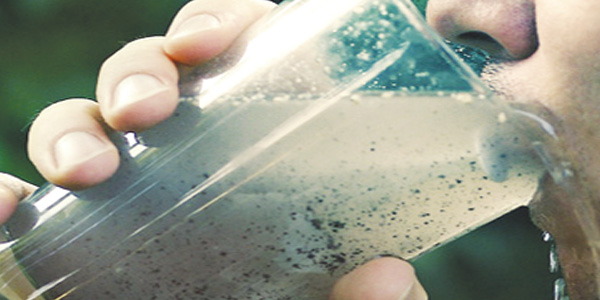Is Water Treatment a Gimmick?
Whether you are on well or municipal water, all water is susceptible to elements that come from the ground. Ever noticed an odor or staining from your homes fixtures? Ever been curious as to what chemicals localities put in their water? Our water treatment specialist collects a sample of your home’s water and recommends the best water treatment solution for your home. Capital Mechanical believes in the importance of safe, clean water for your home. 98% of homes in the United States are recommended to have water filtration for their If the home’s water comes back fine, we’ll let you know a system is not necessary.
How Do I Read My Cities Water Quality Report?
Understanding your annual water report from your locality can play a big part in determining if your homes water is safe.
MCL – Maximum Contaminant Level – Highest level of contaminant level allowed in drinking water. Localities set contaminant level goals for a margin of safety
NTU – Nephelometric Turbidity Units – A measure of water quality. The EPA requires no measurement higher than 0.3 NTU.
ppm – Parts Per Million – One part per million corresponds to 1oz in 7,812.5 gallons.
mg/l – Milligrams Per Liter – This is equal to parts per million.
These are some of the major terms you need to look out for when reading a report. If something seems higher than it should, a water treatment system may be right for you.
How Do I Know If My Water is Safe to Drink?
Collecting a water test is the first major tell-all if your homes water is safe based off of EPA regulations. We’ll help determine a proper solution so you can be at peace with knowing your home’s water is safe at all times.
Municipal Water
“Today some 98 percent of water treatment facilities in the U.S. use some form of chlorine to clean drinking water supplies. The American Water Works Association (AWWA), a trade group representing water utilities across the country, credits the presence of chlorine in drinking water with a 50 percent increase in life expectancy for Americans over the last century. Indeed, some consider the chlorination of drinking water to be one of history’s greatest public health achievements. But others aren’t so sure that any chlorine in drinking water should be considered safe. Opponents of chlorination point to studies linking repeated exposure to trace amounts of chlorine in water with higher incidences of bladder, rectal and breast cancers.” (2013, Scientific American Magazine)
Well Water
“Groundwater is one of the Nation’s most important natural resources and is an important source of drinking water for mostly-rural populations that supply their own domestic water from local wells. In 2015, almost 43 million Americans supplied their own home water and over 98 percent of that water came from groundwater. Naturally, the quality and safety of water in these wells is an issue of concern, and in 2009, the U.S. Geological Survey (USGS) studied the water quality of over 2,000 private wells to measure the existence and extent of contamination. The study found that about 23 percent of them did have at least one contaminant at a level of potential health concern.” (2015, USGS)
Feel at ease knowing your homes water is safe 24/7.
Fill out a form below to request a free water test!
